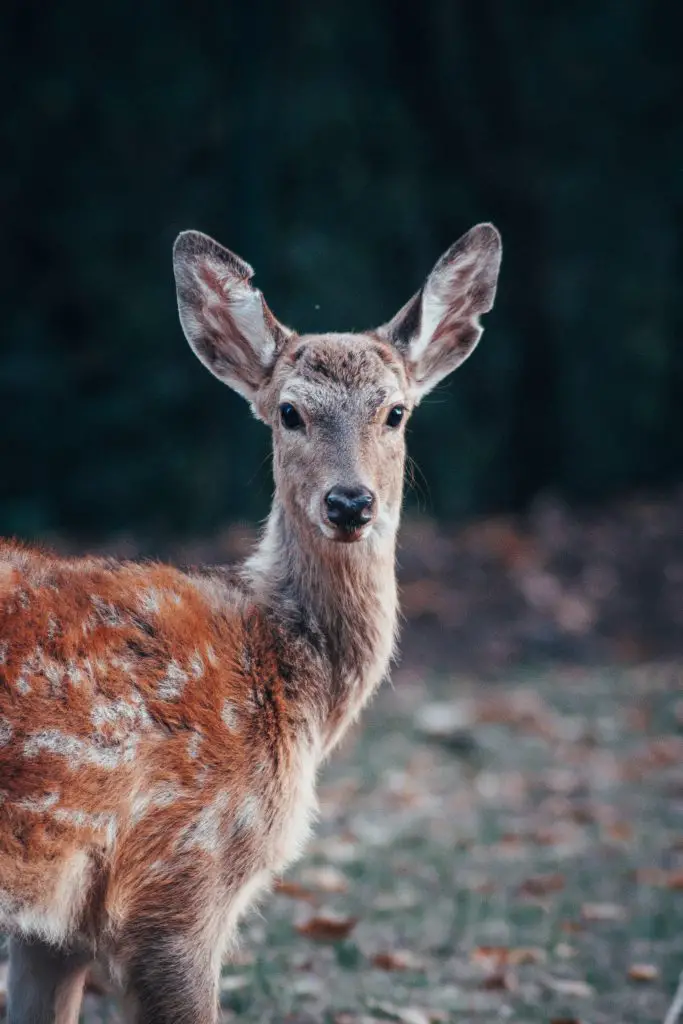Are Asters Deer Resistant? Asters are an extremely popular plant that is used widely in cottage gardens all over the world. The plant produces masses of purple, pink, and white flowers depending upon the variety that you choose. However, if you live in an area that has a large deer population the question is can you successfully grow asters?
Asters are considered to be relatively deer resistant plants according to the New Jersey Agricultural Experimentation Station website that lists asters as being a plant that is “seldom severely damaged”. This means that asters are generally not the deer’s favourite food and they will not necessarily go for asters first.
However, this also means that these plants are not entirely safe and will be eaten if there is relatively little other food available. As such it is advisable to treat the plants as being still susceptible and put in appropriate protections to reduce the chances of the plant being eaten.

How To Keep Deer Out Of Your Garden
Deer can be an extremely persistent pest in many parts of the world, particularly if you live near woodlands that have large deer populations. They are known to venture into domestic properties on a regular basis and will cause problems over time as such you need to put some defensive mechanisms in place.
The only 100% effective method that can be used to stop deer eating your plants is to exclude them entirely from your garden. If you go down that path you will need to build a fence that is approximately 8 ft tall. This at first may seem excessive however academic studies have shown that deer can clear a 6-ft fence and will, at times, attempt to jump over a 7 ft fence.
To avoid any chances of damage over time an 8ft fence acts as a deterrent to avoid having the deer even attempt to enter the property. To read more about this click here.
The second option that you have at your disposal is to plant things that actually repel deer or at the very least are things that they do not like to eat. As a general rule deer do not like plants that are highly fragrant, poisonous, or thorny. However, if you are selecting plants to put into the garden I would recommend visiting the New Jersey Agricultural Experiment Station website to see what they eat.
When selecting plants that deer do not like to eat it is best to plant them towards the edge of your property in garden beds that the deer will first encounter. This will discourage the deer from entering the rest of the garden if there isn’t anything appetizing on offer.
However, it is also advisable to choose plants that are going to naturally screen the rest of your garden where there are more appetizing things for them to eat. If they cannot see the plants they are less likely to enter the garden in the first place.
The plants that we would recommend that you choose for the outer part of your garden are things like large lavenders, rosemary and fragrant herbs such as oregano and thyme.

Using Deer Repellents
Apart from structural changes that you can make to your garden to generally make it less attractive to deer you can also use deer repellents. These repellents come in a range of forms but can largely be grouped into chemical repellents and mechanical repellents.
Generally speaking, the chemical repellents are more effective than the mechanical ones though they have limitations on the extent of protection that can be provided.
Chemical Repellents
There are many chemical repellents available on the market which are based on a range of different ingredients. These ingredients are either classified as fear-inducing, or taste and smell deterrents.
According to a range of academic studies deer repellents that induce fear are far more effective than those that deter based upon taste or smell. The repellents that are fear-inducing are typically based upon things such as coyote urine blood or purified egg. The purified egg works because the sulphur compounds mimic the smells produced by common predators.
However, despite their effectiveness, academic studies have shown that these repellents only last 10 to 12 weeks. After that period the animals will become acclimatised to the smell and begin to feed in your garden again.
As such we recommend buying at least two different deer repellent products for this purpose as this will allow you to alternate between the chemicals every 2 to 3 months. The products that we recommend for this purpose are deer out and plantskydd because they are both fear-inducing repellents that are made using different ingredients and therefore have a different smell. To see the latest price on Amazon for these products click the links.

Mechanical Repellents
There is a large number of different mechanical repellent systems that are available on the market these include things such as motion activated sprinkler systems or ultrasonic systems. Additionally, there are systems that mimic predator eyes at night.
The number of studies on mechanical repellents is significantly less than chemical repellents however there are a couple of them that generally show they are not as effective.
The only ones that we would recommend that you include in your defence system are motion activated sprinkler systems and even those need to be used sparingly as deer quickly get his used to them. As such as it is advisable to move them around the garden and also turn them on and off throughout the season to ensure that they are most effective.
If you want to purchase one the product we would recommend is the Orbit 62100 Yard Enforcer which has a 40 ft detection range and 120 degrees wide view. To see the latest price on Amazon click on the link.
The other systems that are offered are ultrasonic systems which have been shown in tests to be universally ineffective against a range of animals including deer and rodents. As such we would not recommend that you purchase them at all as they will not be effective.
In terms of devices that mimic predator eyes there are no academic studies that I have been able to find which I have looked at their effectiveness. However, when looking at footage of some of the devices in action it appears that they are generally ineffective in preventing deer from feeding.
One of the videos taken from a night vision camera shows a deer standing next to a predator device feeding on plants.
I hope you found this article. If you have any additional questions or comments please put them in the section below.
Relevant Articles
How High Can A Deer Jump? (And What Type Of Fence Do I Need To Build To Keep Them Out)
Does Deer Repellent Really Work? (All The Answers Based On Academic Research)
Do Coffee Grounds Keep Deer Away?
Is Canna Lily Deer Resistant? And How Can You Protect Them?
